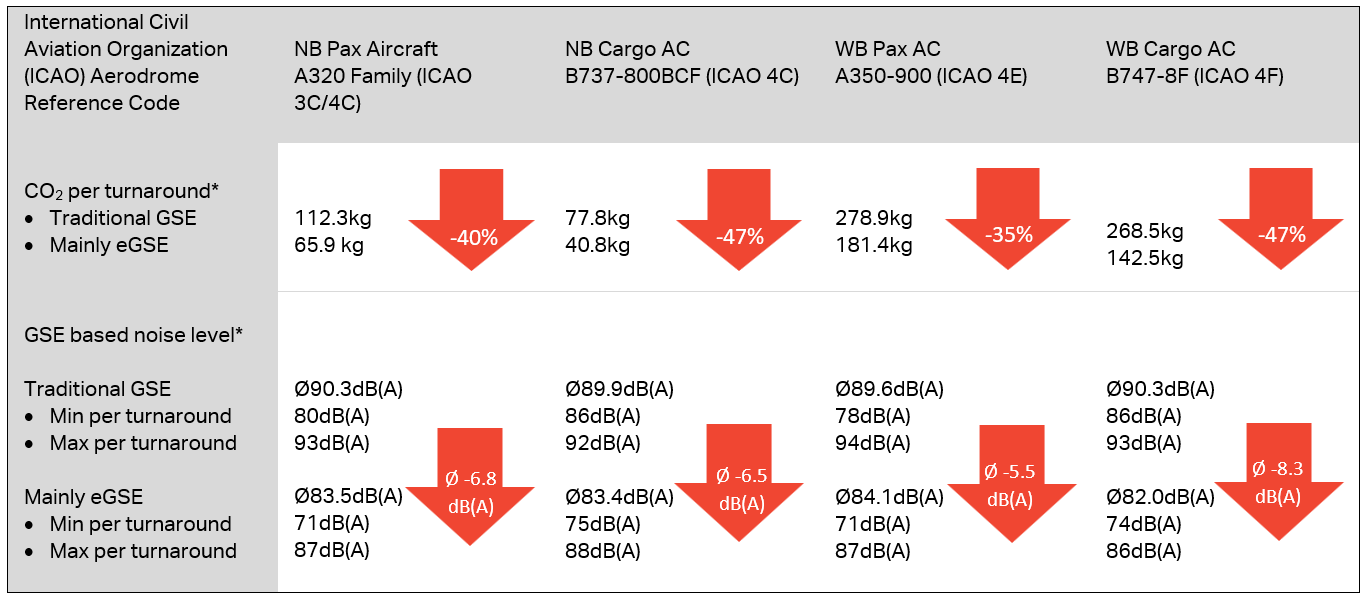
As the global movement towards sustainable aviation gains momentum, ground operations play a crucial role in this transition. One significant aspect of ground operations that has already seen progress is the electrification of GSE. A recent study by IATA shows that, based on an average EU country, electrical GSE (eGSE) produce 35-52% less CO2 emissions and up to 5.5 to 8.3 dB(a) lower noise emissions than traditional GSE per turnaround.
Benefits
- No tailpipe emissions, significantly reduced greenhouse gases and pollutant
- Healthier working environment for ground crew
- Reduced maintenance
- Finer control for maneuvering in congested areas
- Energy efficiency with help of infrastructure
- Quieter operations and better communication
- Synergy with automotive sector
- Commitment to environmental sustainability
Projection of emissions and impact of electric GSE
Transitioning to eGSE involves more than simply procuring new equipment to replace traditional GSE. This process requires a comprehensive review of various elements, including ramp operations and airport infrastructure. Therefore, IATA has developed a report to assist organizations planning or are undergoing this transition. The report explores:
- Factors for eGSE transition
- Infrastructure requirements
- Safety and operational considerations
- Environmental impact
- Economic considerations
- Zero emissions initiatives
- Case studies
For any question or comments, contact us at groundops@iata.org.
